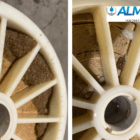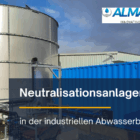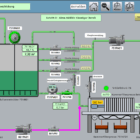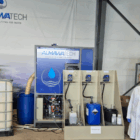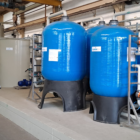In industrial water and wastewater treatment, eluate refers to the liquid that is separated from a solid during the washing or elution process. In the context of filter or ion exchange processes, the eluate is the solution that contains dissolved substances such as ions, heavy metals or organic impurities and has been washed out of a solid medium (such as an ion exchange resin, an activated carbon filter or a soil material).
The composition of the eluate provides important information about the type and quantity of substances that were bound in the solid medium. The elution process is a central element in water treatment, especially in the regeneration of ion exchangers or in the extractive removal of pollutants.
Table of contents
Technical basics of the elution process
The elution process is based on the principle of mass transfer. In this process, bound or adsorbed substances are dissolved from the solid by adding a solution (e.g. acids, alkalis or special eluents) and transferred to the liquid phase. The efficiency of the elution can be controlled and optimized by adjusting the pH value, temperature and flow rate.
The term "eluate" therefore describes the resulting liquid, which serves as a carrier solution for the substances to be removed. This liquid can then be further treated in order to precipitate or neutralize the dissolved substances or to transfer them to a recycling system for recovery.
Areas of application of the eluate in water treatment
Eluates play an important role in various industrial and environmental applications. Typical areas of application are
1. ion exchange process:
- In water treatment, the eluate is obtained during the regeneration of ion exchange resins. The ions that have accumulated on the ion exchange resin are displaced by a strong acid or alkaline solution and end up in the eluate, which must then be treated or disposed of.
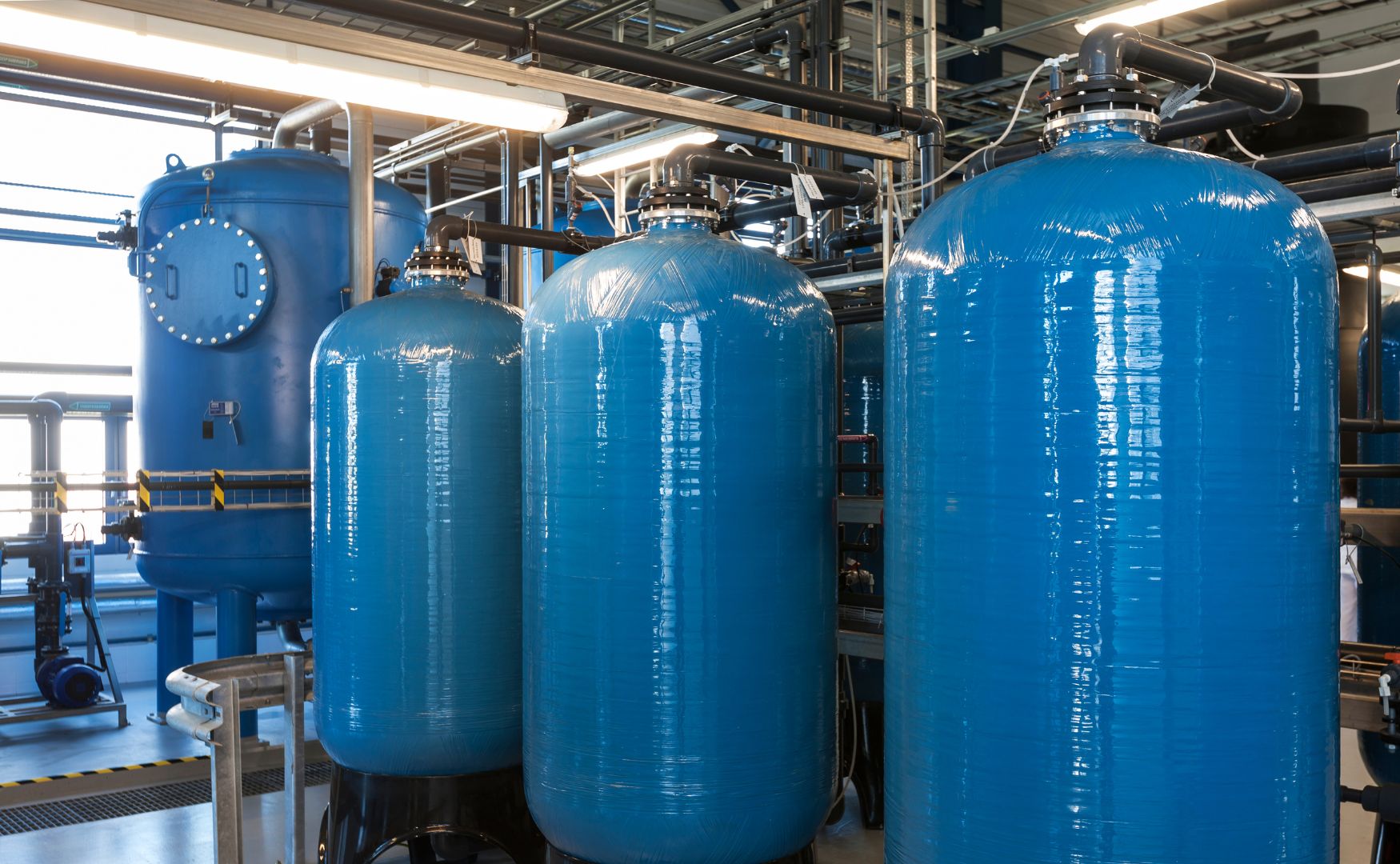
2. activated carbon filter:
- When cleaning water or wastewater with activated carbon, the adsorbed organic substances can be removed from the carbon by elution with solvents or water. The eluate then contains the dissolved pollutants, which must be removed or treated further.
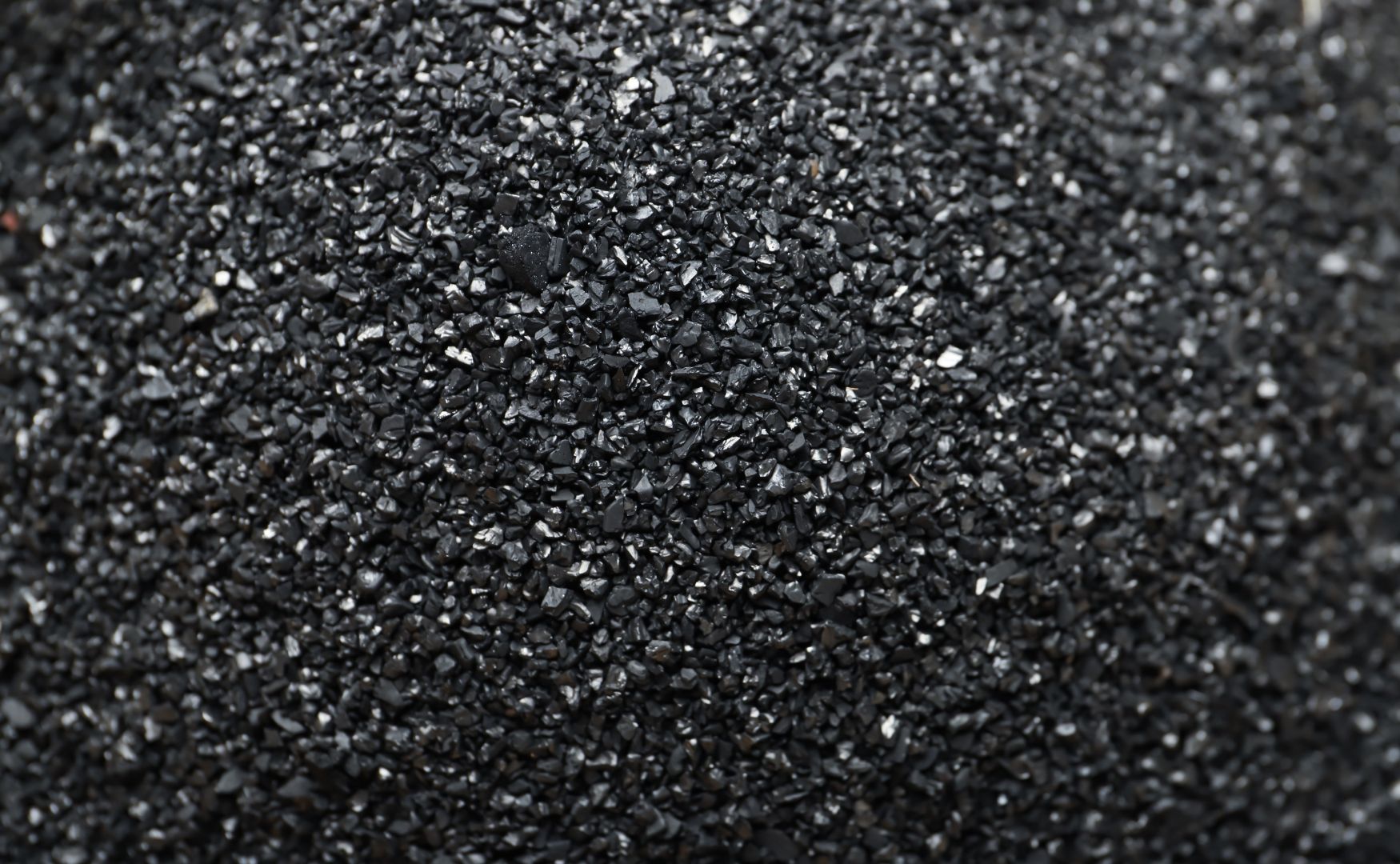
Photo: Activated carbon from our ALMA FIL AK activated carbon filter
3. soil and groundwater treatment:
- In soil remediation, the elution process is used to extract pollutants such as heavy metals or organic pollutants from contaminated soil. The eluate is analyzed and further treated to isolate the pollutants and render them harmless.
4. analytical methods:
- In laboratory analysis, the eluate is used to determine pollutants or to characterize the composition of wastewater or soil. The eluate is used here as a test medium in which the concentration and type of pollutants are recorded.
Technical processes for eluate recovery
The eluate is obtained using specific elution methods, depending on the medium to be treated and the pollutants:
Acid and base elution:
- With ion exchange resins, a strong acid (e.g. hydrochloric acid) or alkali (e.g. caustic soda) is often used to remove cations or anions from the resin. This process is generally used to regenerate cation exchangers or anion exchangers in water treatment.
Water- and solvent-based elution:
- For activated carbon filters that have adsorbed organic pollutants such as hydrocarbons or pesticides, elution with water or organic solvents such as methanol or ethanol can be used to extract the pollutants.
Chelating agents and complexing agents:
- In the elution of heavy metals, complexing agents are often used that bind specifically to the metal ions and facilitate their leaching. Such processes are particularly useful in wastewater treatment or in the remediation of soil and groundwater.
Temperature and pressure elution:
- For certain substances or adsorbents, elution can be carried out by increasing the temperature or pressure. However, this is used less frequently as it requires special equipment and control.
Analysis and post-treatment of the eluate
Analyzing the eluate is an important step in industrial water treatment. It provides data on the concentrations of pollutants and the efficiency of the elution process. Typical analyses include the determination of pH value, conductivity and specific ion or pollutant concentrations.
1. neutralization:
- The eluate can often be highly acidic or alkaline after elution and must therefore be neutralized before it is treated further or discharged into a wastewater treatment plant.
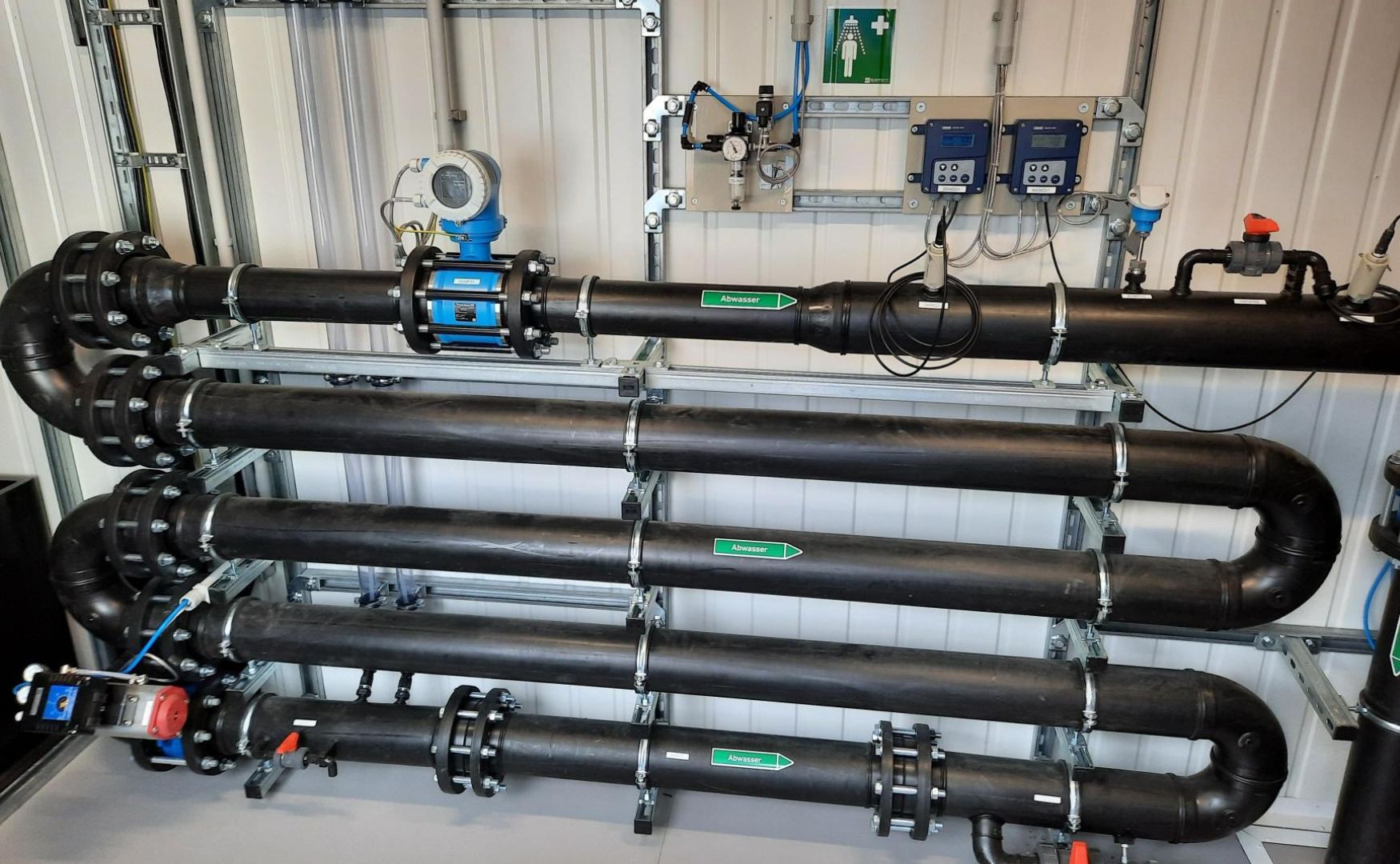
Photo: Reaction loop of our ALMA Neutra neutralization system installed in the ALMA Modul technical room container
2. precipitation and flocculation:
Pollutants in the eluate, especially heavy metals, can be removed by chemical precipitation. The addition of precipitants such as iron or aluminum salts binds the dissolved substances, which can then be separated as sludge.

Photo: CP system ALMA Chem MCW with multi-layer filter ALMA Fil
3. filtration and separation:
- After precipitation, the eluate is cleaned of solids by filtration. This can take the form of HEPA filters or membrane filtration (e.g. ultrafiltration).
4. recovery of recyclable materials:
- In some industries, the eluate is processed further in order to recover valuable materials such as metals. In electroplating, for example, valuable metals are recovered using electrolytic processes.
Importance of the eluate in wastewater treatment
The eluate poses a complex challenge for many industries, as it often contains high concentrations of pollutants and a high salt or metal ion load. Proper treatment of the eluate is crucial to comply with environmental regulations and avoid negative environmental impacts.
In industrial wastewater treatment, eluate treatment is often an integral part of the process, especially in the regeneration of filters and ion exchangers. Eluate treatment processes help to increase environmental awareness and can make operations more efficient and cost-effective.
Conclusion
Eluates are indispensable components of many water and wastewater treatment processes, especially in the regeneration of filter materials and ion exchangers. Careful treatment of the eluate, including neutralization, precipitation and filtration, helps to comply with environmental regulations and recover valuable resources. Eluates place high demands on analysis and further treatment, but offer potential for recovering valuable materials and reducing disposal costs.
For further information on our products, please feel free to contact us at any time!


